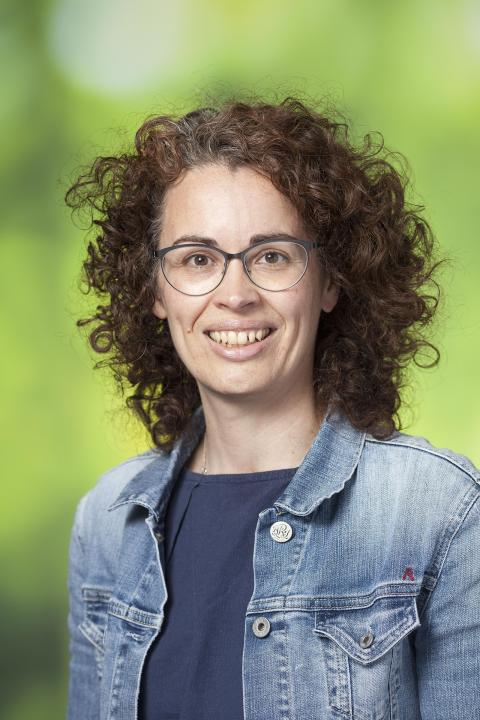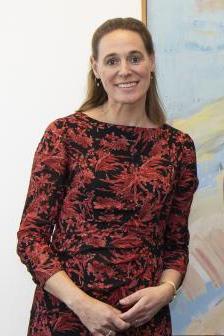We want everyone to dwell on personal leadership
Working together in teams in which the various talents of colleagues are fully utilized. That is what Tilburg University is aiming for in its new strategy under the heading “Use (y)our Talents.” Working on the strengths of colleagues will be central in both appreciation and leadership, according to HR colleagues Ramona van der Linden and Ellen van Dodewaard.
Connection. It is a word that often appears in Tilburg University's new Strategy. In the Strategy, the university emphasizes the importance of being connected to each other, society, other disciplines, and other cultures. But that is not all. The university also wants to connect education more with research and the university more with society. Connecting is a wonderful intention in these times of polarization. At the same time, it is a term that is easily and often used. If you are not careful, it becomes a platitude. It all depends on the extent to which you are able to realize this.
At Tilburg University, at least, it is more than a flash in the pan. The university embraced it earlier in its Strategy. One example is the leadership program Connected Leading. This puts the focus regarding leadership on collaboration and utilizing diverse talents. This is now extended in the new Strategy to the appreciation of colleagues. We spoke to the Head of HR Development, Ramona van der Linden, and Managing Director of HR, Ellen van Dodewaard, about the how and why.

Both in appreciation and in leadership, more emphasis is placed on the strengths of employees
Ramona van der Linden
Connected Leading focuses on leadership characteristics such as connection, self-awareness, and dialogue. Did that land well?
Van der Linden: “In the previous Strategy, we deliberately chose this. We did not impose this vision of leadership but collected it from the organization through 55 interviews and feedback meetings. It was then incorporated into training programs for teams, managers, and other employees.”
At the deliberation table—where the new strategy was discussed—was Connected Leading brought up for discussion?
Van Dodewaard: “That was certainly discussed, but the conclusion is that we are on the right track. We can build on Connected Leading, also because it fits in very well with developments. Think of Recognition & Rewards (new vision of Dutch universities on how to value scientists, ed. ) and goals in the area of social safety and inclusion. The focus on social safety proved to be the right choice, as did the attention to the theme of connection. Thanks to the lockdowns, we see the importance of working on the sense of community extra clearly. Our university, of course, employs many people who come from distant countries and do research here in a different culture and context. How do we keep them, and other colleagues, connected? How do we prevent them from feeling lonely? How do we ensure an inclusive collaborative culture? Participants at the deliberation table felt it was important to emphasize those themes in HR policy.”
The new strategy states 'We bring together Recognition & Rewards and Connected Leading under the heading Use (y)our Talents: a vision of talent development focused on all employees. How do the two come together in practice?
Van der Linden “Both in appreciation and in leadership, more emphasis is placed on the strengths of employees. That's now included in the Performance & Talent Development interviews that employees have about their performance. But it's also in the (personal) leadership programs, like the workshops that colleagues can follow to increase self-awareness. Here, you engage in self-reflection and collect feedback. You see that both managers and non-managers enthuse each other to work on this.”
How many colleagues does the university reach with talent programs?
Van der Linden: “Already 450 colleagues have completed the questionnaire to identify their strengths. They can work with these in a workshop or through individual coaching, a mentor, or the Leadership Program.”
Van Dodewaard: “With everything we do in terms of talent and leadership activities, so far, we have reached 1,000 of the 2,400 employees.”
Are all colleagues expected to work on self-reflection and strengths?
Van der Linden: “We expect personal leadership and team spirit from both academic and support staff. Ultimately, we want everyone to think about this. These topics are also discussed in the Performance & Talent Development interviews. In preparation, employees ask for feedback from others and do a self-evaluation.”

Our leaders have to start looking at talent differently
Ellen van Dodewaard
In line with the national goal of wider Recognition & Rewards, Tilburg University wants to “reward” its academic staff more for other talents than research. This requires a change in leadership. To what extent does it already meet the new requirements?
Van Dodewaard. “We still have to work hard on that. For that, our leaders have to start looking at talent differently and dare to deviate from traditional careers.”
Van der Linden: “That kind of leadership is not given to everyone. Scientists often come in because of other qualities than leadership.”
Van Dodewaard: “It does not always feel like a main task for them either. During the development of Connected Leading, we were told that scientists sometimes see leadership—for example, after an appointment as Head of Department—as a chore, a task they have to do on the side for a while.”
How will you encourage this connective leadership even more in the new Strategy?
Van der Linden: “We are going to coach managers to regularly—so not only during an annual meeting—talk to colleagues about how they are developing. We want them to work more towards an open culture where self-reflection and asking for feedback is the normal way of doing things; with teams where talents are valued. This is a clear demand from the organization. This is how it came out in dialogue sessions on Recognition & Rewards.”
If you want to spot and utilize talent well, teams shouldn't be too big...
Van der Linden: “That is indeed an issue with the large Departments we have. Teams can consist of forty employees or even more. That makes it difficult to provide coaching leadership. Together with the Schools, we are going to identify good practices and share that knowledge. The team leaders at TLS are an example of such a good practice. This can possibly inspire other Schools.”
How do you ensure that career paths other than research become more normal for scientists?
Van Dodewaard: “We are working on diversifying academic career paths, such as a career path with an emphasis on education. That could mean, for example, that you can become a professor because of your qualities in education.”
What it comes down to, for Van Dodewaard and Van der Linden, is more appreciation (rewards) for all the talents that a university needs. Whether it is about support, collaboration, education, or research; you need all the talents to be able to rightfully call yourself top level.
Report Deliberation Table The University Community
Knowing, acknowledging, and appreciating each other in the (hybrid) university community.
